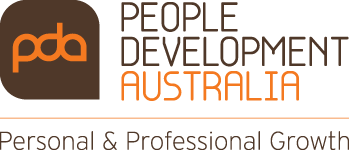Our real drivers in conflict are anything but obvious. The story we tell ourselves about our motivations is, at best, only part of the story. For some of us emotional avoidance will be our strategy for dealing with upset and difference. For others it will be emotional indulgence. The gossiping, the stonewalling, the sarcasm—it can sometimes feel good, and there is a reason. But we tell ourselves we have to do these things, we have to stay angry (because a great injustice has been committed) or worried (because the relationship is in upheaval), while failing to acknowledge the satisfaction our indignation or rumination is providing in the moment.
Emotions can have a certain addictive quality. That’s why wallowing in self-pity or stewing in anger gives us a temporary feeling of satisfaction, but then leaves us feeling worse than before. So, we chase the negative emotion again to compensate, and a cognitive pattern develops. Because thoughts are so much more subtle than overt behaviours like gambling or shopping, it’s extremely difficult to recognise these patterns, and it’s even more difficult to stop. We go back to the emotion again and again without realising it. After all, one of the main purposes of pleasure in our brain is to encourage the repetition of a behaviour.
So, for some of us, we lean into the opportunity to get upset with someone. Subconsciously, we know there’s something in it for us. We’re quicker to take the bait than the situation probably warrants. But even for those of us who aren’t prone to getting upset, there’s still that powerful temptation to stay angry once we’ve allowed ourselves to get to that place. We indulge in thoughts that highlight the awfulness of the other person’s behaviour. We create elaborate, imaginary arguments in our head where we expose the other person’s stupidity or selfishness or hypocrisy.
What do we do with this information? Short of therapy, how can we help people handle conflict more productively? Well, there actually is a scalable, empirically validated way to do this. In all of the examples of runaway conflict, there’s a single, highly responsive lever to which we always have access: our thoughts.
Specifically, it’s what psychologists call automatic thoughts. These are cognitions that jump into our head during an event, often outside of our awareness. But even if they remain unconscious, they still have the power to trigger an emotional reaction, which has the power to trigger a behavioural reaction. The trick, then, is to recognise and manage these cognitions before they lead us astray. In a therapeutic setting, catching and reframing your automatic thoughts is known as Cognitive Behavioural Therapy (CBT). It’s a proven, scientifically validated way to help people get better at the messy under-the-hood stuff. This process empowers us to put our rational, adult selves back in the driver’s seat and choose a more productive response. And of course, like any skill, it takes time and practice.
We’ve spent most of our lives letting our automatic thoughts pop in, do their damage, and then escape unnoticed. Perhaps the hardest part of this whole process is the simple (but not really simple) mindfulness that CBT teaches. But its effectiveness is proven—in fact, in the world of therapy, it’s among the most proven treatments for a huge range of issues like anger management, depression, anxiety, smoking cessation, and addiction.
Getting Personal
As a coach and therapist, I often guide others to identify the specific automatic thoughts that are problematic for us. One person may struggle with thoughts like, “It’s wrong to upset people,” while someone else wrestles with thoughts like, “I’ll look weak if I back down.” Yet someone else might deal with, “If I admit I’m wrong, I’ll lose all my credibility.” It’s invaluable to have someone who can guide us through the process and translate some of these abstract concepts into concrete, real-world behaviours.
Wiley Publishing are also in this space and that’s why we use their evidenced based profiling systems. Wiley have taken elements that make CBT so effective and transplant them into a scalable set of profiles. They spent two years developing and testing a profile that takes the learner’s personality into account and helps them understand the type of thoughts that may be particularly tempting. For example, a direct, assertive person may be prone to unrealistic thoughts like, “You’re trying to control me,” whereas a more mild-mannered, gentle person might be prone toward something like, “If I make you mad, it could ruin our relationship.”
Our Productive Conflict and our Agile EQ programs help participants quickly understand their own unique approach to conflict, needs driven behaviour and automatic thinking with both its benefits and drawbacks. Further, we take personality models like DiSC and use them to normalise the struggle we all have when trying to regulate our automatic thoughts and needs driven behaviour. When someone participates in our programs, they realise everyone deals with their own destructive responses to emotions and workplace conflict. The program gives them an opening in those moments to help take ownership of those problematic responses, and they are often grateful to finally have some insight into why this has been such a struggle throughout their lives.
Back in the Driver’s Seat
We don’t have to accept unproductive emotions and conflict as an inevitable drag on today’s workplace. Becoming less reactive and judgemental isn’t easy. At the same time, it’s liberating to know that we don’t have to be at the mercy of our automatic thoughts and hidden emotions. We have the power to put our conscious selves back in the driver’s seat. There may be a lot going on under the hood—and let’s be honest, we’re never going to be fully aware of the psychological forces that push and pull us, particularly in the high-stakes arena of conflict. But as individuals, we have an access panel to help us be more deliberate about our choices during those times. And as organisations, we have a way to create a culture where conflict spurs innovation and superior problem solving rather than factions, politics, and toxicity.
Reference: Wiley Publishing Under the Hood.

